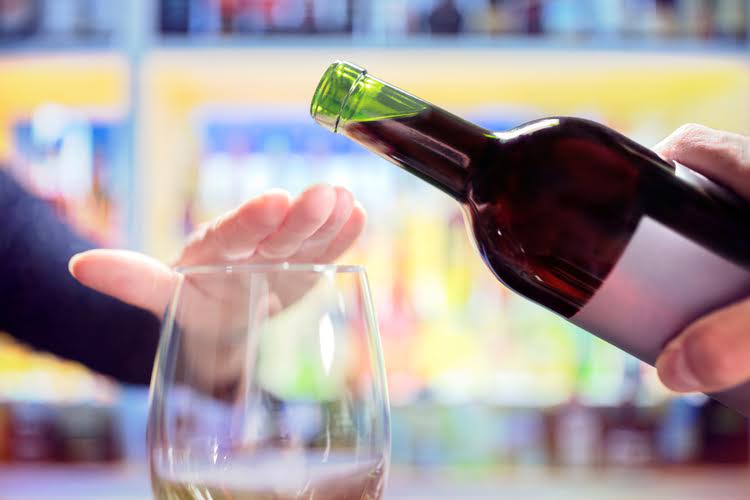

Drinking from an early age can cause long-term problems that can even go into your 40s and 50s. Not only do varying levels of alcohol in the system result in shifting moods, but chronic drinking changes structures and chemical processes in the brain that disrupt normal emotional response. People addicted to alcohol start to feel as if they need alcohol to relax. They will turn to drink to get their mind off of challenges and conflicts, to banish negative emotions, and to cope with stress. Professionals with demanding careers often use alcohol for social reasons, but friendly drinks soon become a coping mechanism. Even workers without demanding, hazardous jobs experience work-related alcohol issues.

Other brain problems include microencephaly ( less volume of the brain tissue) and fewer numbers of brain cells that can function correctly, leading to long-term problems in learning and behavior. Overall, 62% of U.S. adults say they ever drink alcohol, while 38% abstain completely, according to a July 2023 Gallup survey. This share peaked in the late 1970s, when 71% of adults said they drank alcohol. Pew Research Center conducted this analysis to understand Americans’ experiences with alcohol and how they have changed over time.
Alcoholism has been known by a variety of terms, including alcohol abuse and alcohol dependence. No matter how hopeless alcohol use disorder may seem, treatment can help. If you think you might have a problem with alcohol, call SAMHSA or talk to your healthcare provider. They can help you cope, make a why do people become alcoholics treatment plan, prescribe medications and refer you to support programs. Alcohol use disorder is a medical condition involving frequent or heavy alcohol use. People with alcohol use disorder can’t stop drinking, even when it causes problems, emotional distress or physical harm to themselves or others.
The diagnosis is made when drinking interferes with your life or affects your health. Online and community-based recovery groups can also be helpful during alcohol withdrawal and addiction treatment. A support group, like Alcoholics Anonymous or SMART recovery, can help you feel less isolated and provide an opportunity to learn from and connect with others with similar problems and shared experiences. While external forces may have pushed you into alcoholism, you can still take control.
Treatment for alcoholism often involves a combination of therapy, medication, and support. If you think you might have an alcohol use disorder or if you are worried that your alcohol consumption has become problematic, it is important to talk to your doctor to discuss your treatment options. Alcoholism is a term that is sometimes used to describe what is known as an alcohol use disorder (AUD). College students are culturally expected to take part in social drinking, even to the point of binge drinking, while at school. Movies and television shows often portray this behavior in a positive light, while also vilifying those who try to promote responsible decision making and sobriety. These alcohol tropes perpetuate ideas of peer pressure which can cause college students to make decisions they normally wouldn’t like binge drinking, skipping classes, and avoiding responsibilities.
Having friends who drink alcohol provides a model for drinking behavior and can even lead to peer pressure. The National Institute on Alcohol Abuse and Alcoholism states how an alcohol use disorder is determined. They reference the behaviors and point to the presence of withdrawal symptoms that occur when someone stops their alcohol intake -if they are an alcoholic. In all cases of alcoholism, individuals have an impaired ability to control or stop their alcohol use, even in the face of health, social, and occupational consequences. Alcoholism is sometimes classified as a brain disorder, and it can be severe, moderate, or mild.
These have serious side effects that can inflict long-term physical and psychological damage on your body. To effectively treat both of them, licensed clinicians must look at each disorder simultaneously. Alcoholism is defined by a heavy dependence on drinking, regardless of the effects it produces. There are many risk factors involved in the potential for developing alcoholism.

Symptoms of alcohol use disorder are based on the behaviors and physical outcomes that occur as a result of alcohol addiction. Although the exact cause of alcohol use disorder is unknown, there are certain factors that may increase your risk for developing this disease. Alcohol use disorder is a pattern of alcohol use that involves problems controlling your drinking, being preoccupied with alcohol or continuing to use alcohol even when it causes problems. This disorder also involves having to drink more to get the same effect or having withdrawal symptoms when you rapidly decrease or stop drinking. Alcohol use disorder includes a level of drinking that’s sometimes called alcoholism. Diagnosis is based on a conversation with your healthcare provider.
Someone who battles with alcoholism usually prioritizes drinking over most life activities, including family and work obligations. They also build a tolerance over time, which means they need to drink more to get inebriated. In addition, when they stop drinking, they experience uncomfortable withdrawal symptoms.
You’ll soon start receiving the latest Mayo Clinic health information you requested in your inbox. In addition to getting appropriate AUD treatment, there are things that you can do on your own that will make it easier to cope with and sustain your recovery. Hosted by Amy Morin, LCSW, this episode of The Verywell Mind Podcast shares strategies for coping with alcohol cravings and other addictions, featuring addiction specialist John Umhau, MD.
Meanwhile, consumption of distilled spirits dropped slightly, from 3.0 to 2.8 gallons. Looked at another way, 17.4% of all alcohol consumed by Americans in 2021 came from wine, up from 12.0% in 1971. The share coming from beer fell from 44.6% to 42.3% during the same period, while the share coming from spirits fell from 43.5% to 40.3%.